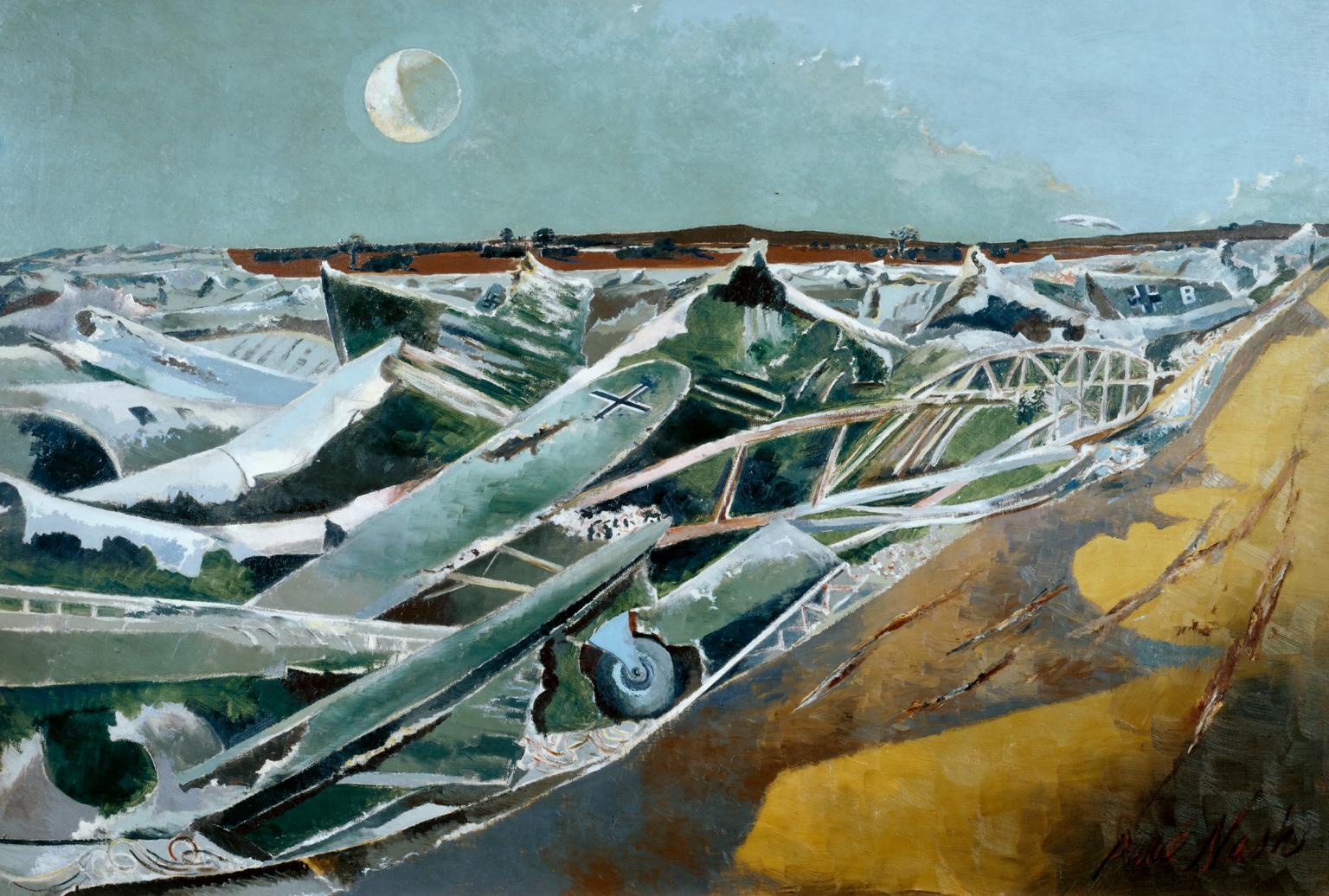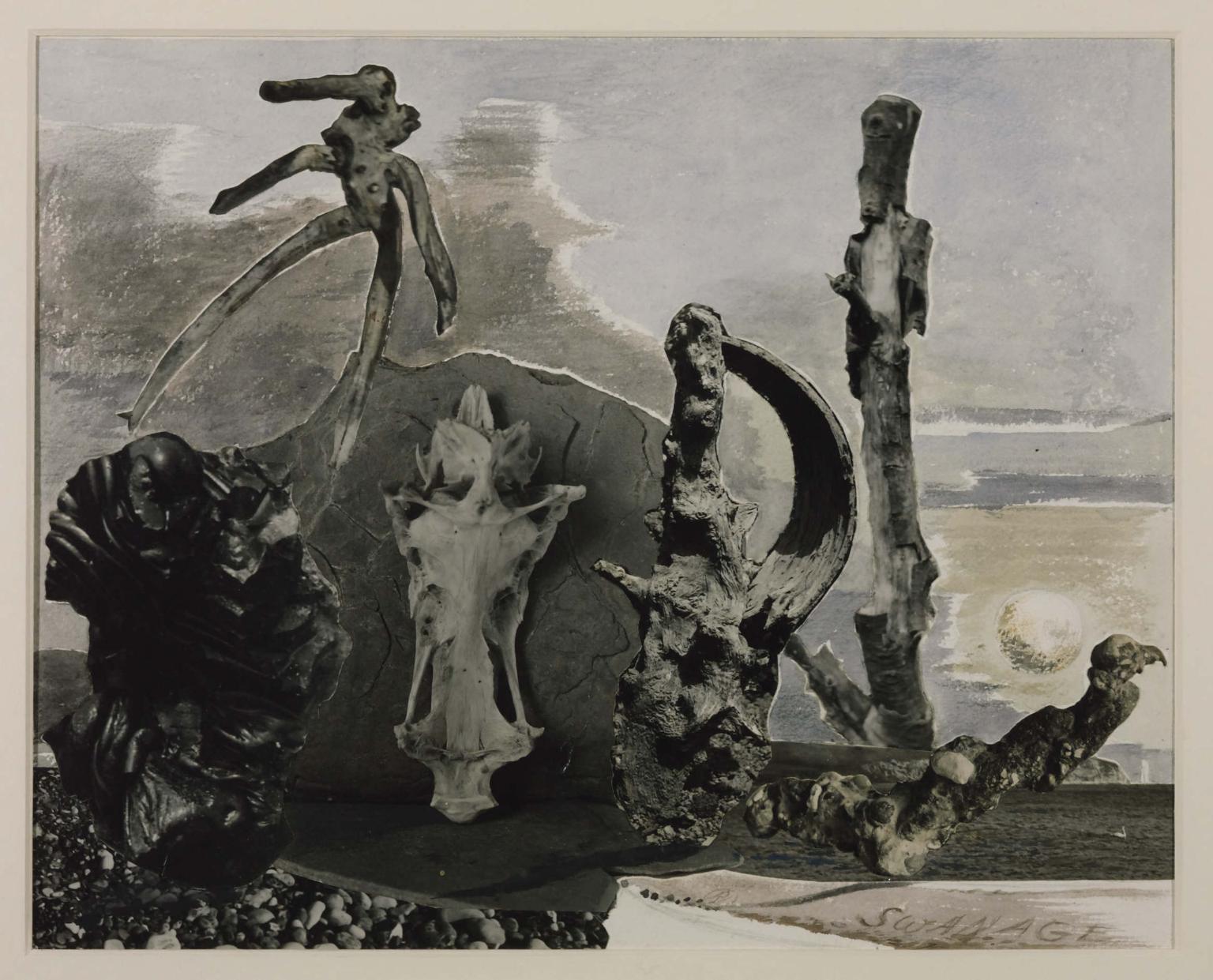Today it's V-E Day—Victory in Europe Day was the public holiday celebrated on 8 May 1945 to mark the formal acceptance by the Allies of World War II of Nazi Germany's unconditional surrender of its armed forces. The formal surrender of the German forces occupying the Channel Islands did not occur until the following day, 9 May 1945. It thus marked the end of World War II in Europe.
Paul Nash (11 May 1889 – 11 July 1946) was a British surrealist painter and war artist, as well as a photographer, writer, and designer of applied art. Nash was among the most important landscape artists of the first half of the twentieth century. He played a key role in the development of Modernism in English art.
The artworks he produced during World War I are among the most iconic images of the conflict. After the war Nash continued to focus on landscape painting, originally in a formalized, decorative style but, throughout the 1930s, in an increasingly abstract and surreal manner. In his paintings he often placed everyday objects into a landscape to give them a new identity and symbolism.
During World War II Nash produced two series of anthropomorphic depictions of aircraft, before producing a number of landscapes rich in symbolism with an intense mystical quality. The painting we present today depicts a moonlit landscape populated by a graveyard of crashed German planes. The broken shards of metal from the wings and fuselages resemble a seascape of jagged ice, possibly inspired by Caspar David Friedrich's The Sea of Ice.
The work was based on sketches and photographs made at the Metal Produce and Recovery Unit at Cowley near Oxford in August 1940, where the remains of both German and British crashed aircraft were brought to be recycled at the Morris Motors car factory nearby, which was being used to construct and repair aircraft. Nash wrote that, under moonlight, the sea of wreckage could be perceived to move and twist, but in reality it was of course dead, and the only movement was the flight of a white owl, depicted to the upper right.
Paul Nash was the older brother of the artist John Nash.
See you tomorrow!


 Paul Nash
Paul Nash